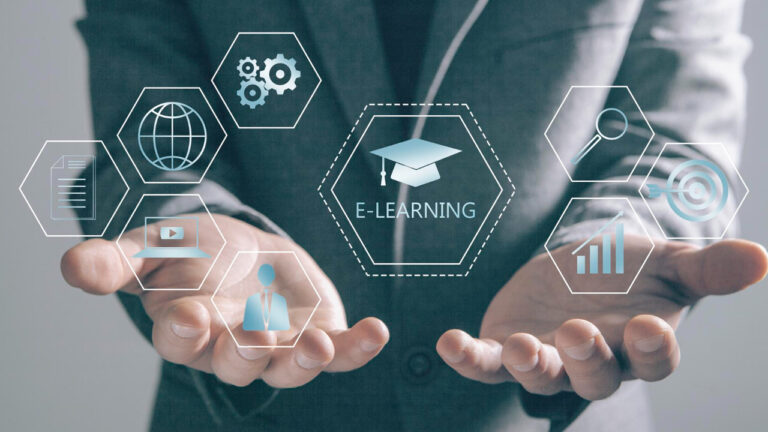Exploring the world of training platform technology can be daunting, especially when distinguishing between a Learning Management System (LMS) and a Management Information System (MIS). Both systems play crucial roles in enhancing training experiences, yet they serve distinct purposes. Understanding these differences is key to leveraging their full potential.
An LMS focuses on delivering and managing online learning content. It simplifies training by offering tools for interactive communication, grading automation, and progress tracking. Whether you’re onboarding new employees or filling skill gaps within your workforce, an LMS streamlines the entire learning process from one central location.
On the other hand, an MIS concentrates on administrative tasks like attendance tracking and academic data management. It’s designed to improve school operations and boost family engagement through features like parent-teacher communication tools. By grasping how these systems differ in focus and functionality, you can make informed decisions that enhance both learning outcomes and operational efficiency.
In the realm of training and online learning technology, distinguishing between a Learning Management System (LMS) and a Management Information System (MIS) is crucial for addressing organizational needs. An LMS focuses on the delivery, tracking, and management of training content and learner engagement, while an MIS provides comprehensive data management and reporting capabilities that facilitate decision-making processes. Stratbeans Learning Solutions effectively bridges these two systems by offering integrated solutions that enhance learning experiences and streamline administrative tasks. This dual approach allows organisations to benefit from the strengths of both systems, ensuring that they can manage educational content efficiently while also leveraging data insights to drive continuous improvement in their training programs. Understanding these differences empowers organizations to select the right tools for their business goals through trainings and skilling , ultimately enhancing overall effectiveness in delivering quality learning experiences
Understanding Learning Management Systems (LMS)
A Learning Management System (LMS) enhances online training experiences by streamlining content delivery and learner engagement. It’s essential for efficiently managing various aspects of online education.
- Tools for Distribution
An LMS efficiently disseminates learning materials like videos, documents, and other resources to learners. This centralized approach ensures easy access to all necessary content.
- Tools for Communication
Effective communication among stakeholders is facilitated through features such as email, discussion forums, and announcements. This keeps trainers, learners, and administrators connected throughout the learning process.
- Tools for Interaction
An LMS supports interactive learning activities like quizzes, tests, and group discussions. Personalized learning paths can be created by teachers using these tools to manage interactive content effectively.
An LMS integrates these functionalities to create a cohesive platform that supports both self-paced courses and structured eLearning programs.
Exploring Management Information Systems (MIS)
Management Information Systems (MIS) play a crucial role in educational management by enhancing operational efficiency. These systems handle various administrative tasks, streamlining processes and facilitating data-driven decision-making.
- Data Management: MIS provides robust tools for collecting, storing, and analyzing academic and administrative data. It supports database management to ensure accurate information tracking across departments.
- Reporting Tools: Use comprehensive reporting features to generate detailed insights into student performance, enrollment patterns, and resource allocation. This aids in strategic planning and policy formulation.
- Integration Capabilities: Seamlessly integrate with other educational platforms like LMSs or financial systems to provide a unified interface for users. This ensures consistent data flow across different functions within the institution.
- User Satisfaction Evaluation: Regularly assess user satisfaction through feedback mechanisms integrated within the system. Positive user experiences can significantly impact the overall effectiveness of MIS implementations.
Comparing LMS and MIS

In training platform technology, Learning Management Systems (LMS) and Management Information Systems (MIS) serve distinct yet complementary roles. While both systems aim to enhance educational experiences, they differ in focus and functionality.
Similarities Between LMS and MIS
Both LMS and MIS manage data efficiently. An LMS tracks learning activities such as assignments, quizzes, and employee engagement. Similarly, an MIS handles administrative data including enrollment details, attendance, grades, and other training and onjob statistics.
Tracking learner’s progress is another shared feature of these systems. An LMS monitors learning outcomes like course completion and assessment results. Conversely, an MIS provides insights into overall academic performance by tracking attendance and grades.
Both platforms help communication and collaboration between students and educators. Discussion forums live chats video conferencing tools in an LMS enable real-time interaction while the communication tools in an MIS improve administrative collaboration among various kind of users
Key Differences Between LMS and MIS
The primary distinction lies in their focus areas: An LMS concentrates on delivering and managing course content enhancing the online learning experience through interactive features while allowing instructors to create quizzes automate grading provide timely feedback use analytics to identify skill gaps, track learner’s progress with dashboards or reports. A MIS focuses more on administrative functions maintaining comprehensive databases for efficient school management improving operational efficiency through streamlined processes simplified reporting better resource allocation using robust data management integration capabilities

Deep Dive into LMS and MIS
Understanding the distinct purposes and functionalities of Learning Management Systems (LMS) and Management Information Systems (MIS) is crucial for optimizing educational and administrative efficiencies. An LMS focuses on delivering, managing, and tracking educational content, making it ideal for organisations, corporate training departments, and online course providers. Key features include course creation, user management, assessment tools, progress tracking, and integration with other tools.
In contrast, an MIS provides managers with tools to efficiently organize and evaluate departmental operations within an organization. It handles administrative tasks like attendance tracking and data management to improve school operations. By leveraging both systems’ strengths—an LMS for enhancing learning experiences through streamlined content delivery and learner engagement; an MIS for boosting operational efficiency through robust data management—you can achieve comprehensive improvements in both educational outcomes and organizational processes.
Selecting between an LMS or MIS involves aligning the system choice with your specific needs. Consider factors like purpose alignment, integration capabilities, scalability options, stakeholder involvement in decision-making processes as well as ongoing training programs to ensure effective implementation. Regular feedback collection from users also plays a vital role in evaluating satisfaction levels while monitoring performance metrics ensures continued success post-integration across all areas impacted by these systems’ functionalities.
| Feature | LMS (Learning Management System) | MIS (Management Information System) |
|---|---|---|
| Data Management | Tracks learning activities (assignments, quizzes, employee engagement) | Manages administrative data (employee records, enrollment, grades) |
| Tracking Progress | Monitors learning outcomes, course completion, and assessment results | Tracks overall onjob performance through attendance and grades |
| Communication & Collaboration | Provides discussion forums, live chats, and video conferencing tools | Supports administrative collaboration with tools for various users |
| Focus | Focuses on course content delivery, enhancing learning experiences | Focuses on administrative efficiency and operational management |
| Key Functions | Course creation, assessment tools, progress tracking, learner analytics | Attendance tracking, data management, reporting, resource allocation |
| Purpose | Designed for educational institutions, corporate training, and online courses | Designed for improving school operations and administrative processes |
| Integration Capabilities | Integrates with other learning tools and content platforms | Integrates with data management systems to streamline administrative tasks |
| Primary Stakeholders | corporate trainers and employees as learners | Admin and other stakeholders |
Choosing Between LMS and MIS

Deciding between an LMS and an MIS depends on specific organizational needs. Both systems improve educational experiences, but their functions differ significantly.
Factors to Consider
- Purpose Alignment: Ensure the chosen system aligns with your primary objectives. An LMS suits those focusing on learning delivery and engagement, while an MIS benefits administrative efficiency.
- Integration Capabilities: Evaluate how well each system integrates with existing platforms. Effective integration streamlines operations and enhances data consistency.
- User Needs: Identify user requirements by considering feedback from educators, administrators, or students. The right choice addresses their unique needs effectively.
- Scalability: Select a system that accommodates growth in users or data volume without compromising performance.
- Stakeholder Involvement: Engage all relevant parties throughout the selection process to ensure buy-in and address diverse perspectives.
- Training Programs: Carry out comprehensive training sessions tailored to different user groups for smooth adoption of the new system.
- Regular Feedback Collection: Establish mechanisms for users to provide ongoing feedback post-deployment, ensuring continuous improvement of functionalities.
- Performance Monitoring: Use analytics tools to track key performance indicators (KPIs) related to both educational outcomes and operational efficiencies after implementation.
Final Thought
Understanding the distinct roles of LMS and MIS can significantly enhance both educational experiences and operational efficiencies. An LMS serves as a powerhouse for delivering online learning content, making it ideal for organization and training departments focused on interactive learning. Meanwhile, an MIS excels in streamlining administrative tasks, aiding in effective admin management
By evaluating your specific organizational needs—whether it’s course management or data-driven administrative decisions—you can choose the system that aligns best with your goals. Consider factors like integration capabilities, scalability, and stakeholder involvement to ensure you maximize benefits from these technologies. Eventually leveraging both systems’ strengths will lead to comprehensive improvements in education delivery and school operations.


